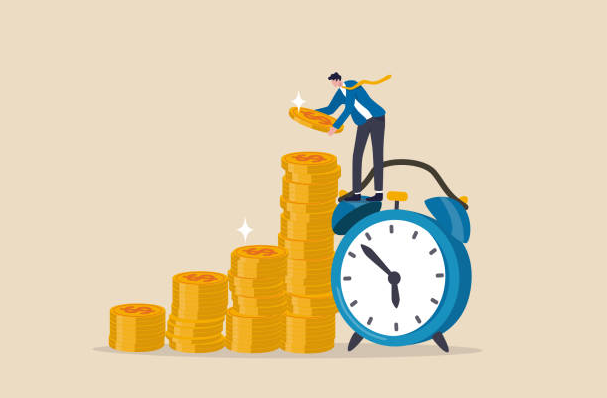
Receiving a financial windfall—whether it’s a bonus from work, an inheritance, or other unexpected income—can be both exciting and overwhelming.
While it may be tempting to splurge, making wise financial decisions can have long-lasting benefits.
Managing a windfall strategically involves balancing between debt repayment, savings, and investments to maximize your financial security and growth.
In this guide, we’ll cover the best practices for allocating a windfall so you can make the most of your newfound funds and set yourself up for a stronger financial future.
1. Take a Step Back Before Making Any Decisions

When you receive unexpected income, the first and most crucial step is to pause and avoid making any impulsive decisions.
Give yourself time to assess the amount, your financial situation, and your goals. This waiting period allows you to create a plan without the pressure of immediate spending.
Action Step:
Place the windfall in a high-yield savings account or money market account temporarily while you create a plan. This ensures your money earns some interest and remains easily accessible.
If you want to learn more about human behavior on finance, you can read our article on Understanding Consumer Financial Decision-Making here!
2. Pay Off High-Interest Debt

One of the smartest moves you can make with a financial windfall is to pay off high-interest debt, such as credit card balances or personal loans.
High-interest debt can be a significant drain on your finances, so eliminating it provides an immediate return on investment.
Why Prioritize Debt Repayment?
- Instant Savings: Paying off a credit card with a 20% interest rate is equivalent to earning a guaranteed 20% return on that amount.
- Reduced Financial Stress: Eliminating debt frees up monthly cash flow, making it easier to save and invest going forward.
Action Step:
Create a list of all your debts and prioritize paying off those with the highest interest rates first. This approach is known as the debt avalanche method.
3. Build or Boost Your Emergency Fund

An emergency fund is essential for financial stability. If you don’t already have one, use a portion of your windfall to create one. If you do have an emergency fund, consider topping it up to cover more months of living expenses.
How Much Should You Save?
Aim for 3-6 months of living expenses in an easily accessible high-yield savings account. High-income earners or those with variable income (such as freelancers) may want to save up to 12 months’ worth.
Action Step:
Calculate your monthly expenses and multiply by the number of months you want to cover. Set aside this portion of your windfall in a high-yield savings account for emergencies.
4. Invest for Long-Term Growth

Once your debt is managed and your emergency fund is in place, it’s time to consider investing a portion of your windfall.
Investing helps grow your wealth over time and sets you up for financial success in the future.
Investment Options to Consider:
- Stock Market: Investing in index funds like the S&P 500 provides broad market exposure with a history of reliable returns.
- Retirement Accounts: Max out contributions to tax-advantaged accounts such as 401(k)s and IRAs. If eligible, consider a backdoor Roth IRA conversion for future tax-free withdrawals.
- Real Estate: For those looking to diversify, real estate can be an excellent option for generating passive income and long-term appreciation.
Action Step:
Allocate at least 10-30% of your windfall to investments based on your risk tolerance and financial goals. Consider consulting with a financial advisor to tailor an investment strategy that aligns with your objectives.
5. Plan for Future Expenses

Unexpected income can be a great way to prepare for upcoming significant expenses. Whether you’re planning for a home renovation, a new vehicle, or your children’s education, allocating part of your windfall for these expenses can reduce the need for future borrowing.
Action Step:
Set up a dedicated savings account for future expenses and transfer the designated portion of your windfall. Label it clearly so you remain committed to using it for its intended purpose.
6. Treat Yourself Responsibly

It’s important to allow yourself a little enjoyment with your windfall. Rewarding yourself, within reason, can provide motivation to stick to your overall financial plan.
Set a small percentage aside—usually 5-10%—for discretionary spending, such as a vacation, new gadget, or special outing.
Action Step:
Determine a reasonable amount that won’t jeopardize your financial goals and use it for a treat that makes you happy. The key is to plan this allocation so it doesn’t become excessive.
7. Donate to a Cause You Care About

If philanthropy is important to you, consider using a portion of your windfall to give back to your community or support a cause you’re passionate about.
Donating can provide tax benefits while also contributing to a meaningful impact.
Action Step:
Research charities or non-profit organizations that align with your values. Allocate a percentage of your windfall for charitable giving and consult with a tax professional to understand any deductions you may qualify for.
Suggested Allocation for a $10,000 Windfall
To help visualize how you might allocate an unexpected $10,000, here’s a suggested breakdown:
- Debt Repayment: $3,000 (30%)
- Emergency Fund: $2,000 (20%)
- Investments: $3,000 (30%)
- Future Expenses: $1,000 (10%)
- Treat Yourself: $500 (5%)
- Charitable Donations: $500 (5%)
This allocation ensures you cover essential areas like debt and savings while still leaving room for enjoyment and giving.
Make the Most of Your Windfall
A financial windfall, no matter the size, is an opportunity to make impactful financial decisions that can set you up for long-term success.
By balancing debt repayment, savings, and investments—and leaving a little room for discretionary spending—you create a financial plan that aligns with both your immediate and future goals.
Learn more on how you can better manage your finances in our article here!
Looking to Grow Your Windfall Through Smart Investments?

Consider leveraging the power of a First Lien HELOC to maximize your investment potential.
Try our First Lien HELOC calculator today to see how much equity you can access and make your money work even harder for you.

